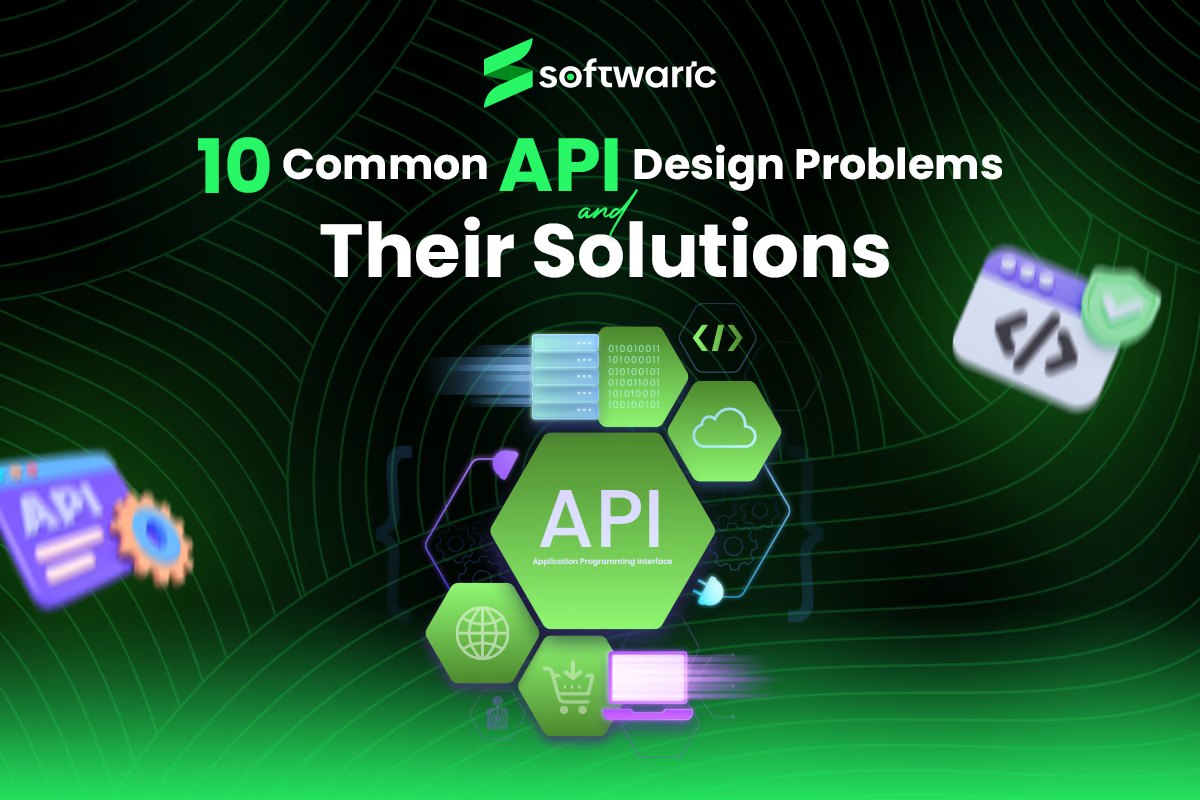APIs or Application Programming Interfaces, have a huge role in advanced software development. They act as intermediaries and allow various software apps to communicate and share data effectively. For improving functionality, creating integrations and delivering a perfect user experience on different platforms, APIs are very important.
In today’s modern world, it is crucial to have a good API design because it helps in improving usability and scalability and also develops smooth interaction between systems. Poor API design will affect the performance and also create difficulties for both developers and users.
1. Inconsistent Naming Conventions
Problem: The use of inconsistent naming conversions is one of the common problems in API design. The developers become confused when various endpoints or parameters are named inconsistently. For example, misunderstandings are created when different naming styles are used like camelCase for some endpoints and snake_case for others. This inconsistency not only creates hurdles for new developers but also makes it difficult to use API effectively.
Solution: By using a smooth and consistent naming convention, we can reduce such issues. Following RESTful conventions like the use of nouns for endpoints (e.g. /users to display user resources) and verbs for actions (e.g. GET, POST, PUT, DELETE to specify the operation). This method will make it easy to understand the various endpoints.
2. Lack of Versioning
Problem: Another problem arises when APIs undergo changes or updates without proper versioning. Existing apps, dependent on API, can be affected due to changes in API updates and it results in bad user experiences. Developers will find it difficult to adapt to these sudden changes and it leads to loss of trust in the API and frustration.
Solution: Implement the API versioning from the start to avoid these damages. Various ways are there for versioning but most preferred one is to add version numbers in the URL (e.g. /v1/users). It can also be managed by the request headers (e.g. Accept: application/vnd . yourapi . v1+json).
3. Over-Complicated Responses
Problem: The return of excessive and complex data from API will affect the performance of your app and also frustrate developers. This also leads to confusion and person can’t decide which data is relevant. This will be a big issue in case of large datasets and also make it difficult to use the information correctly.
Solution: By returning only the essential data, the usability of your API can be improved. The use of techniques like pagination or filtering for huge datasets will help the users to keep only useful data. Also, using a flexible response format will allow the users to define the structure of returned data according to their needs.
4. Poor Error Handling
Problem: Proper error handling is important for a good developer experience but most of the APIs lack this thing. Vague or unhelpful error messages leave developers without the context needed to diagnose and fix issues. This results in frustration and a lot of time is wasted in all of this.
Solution: Use clear and meaningful error codes in your API will solve this problem. Using standard HTTP error codes (e.g. 404 for “Not Found” or 500 for “Internal Server Error”) will help and guide the developers. Additionally, include descriptive error messages that offer context about the issue and, if possible, suggest potential resolutions.
5. Lack of Authentication and Authorization
Problem: Security is a major concern for APIs, dealing with sensitive information. So, APIs without authorization and strong authentication will expose themselves to potential vulnerabilities, including unauthorized access to sensitive information.
Solution: Using strong authentication methods like JWT (JSON Web Tokens) and OAuth 2.0 will protect all your sensitive information and then only authorized users can access the API.
6. No Rate Limiting or Throttling
Problem: By accepting different requests from the customers will overload the server and also affect its performance. This will result in bad user experience.
Solution: Implement rate limiting to control how many requests a client can make within a defined timeframe. This will protect your servers from damage and also ensure fair usage of resources.
7. Ignoring Documentation
Problem: It is important to do proper documentation. Many APIs are released without adequate guidance. APIs which don’t have complete documentation will create hurdles for developers and make it difficult to use API effectively.
Solution: Complete documentation by using tools like Postman or Swagger is very essential. Detailed information of endpoints, parameters, response formats and examples of common use cases are all included in a good documentation. Regularly update the documentation to reflect changes and improvements to the API, ensuring that it remains a reliable resource.
8. Tight Coupling with Backend Systems
Problem: APIs that are tightly coupled with their backend systems can present challenges when it comes to updates or scaling. If the API is overly dependent on the backend architecture, any changes to the backend may require corresponding changes to the API, making maintenance cumbersome.
Solution: Design APIs by using a loose coupling method like adopting a microservices architecture. This helps in facilitating updates and scaling without affecting the API.
9. Ignoring Caching Strategies
Problem: Avoiding caching strategies will affect the performance of your API. This leads to late response times and results in bad user experience.
Solution: Use of caching techniques like HTTP caching headers such as ETag and Cache-Control will reduce this problem. Caching allows clients to store responses temporarily, reducing the need to make repeated requests for the same data.
10. Poor Performance Optimization
Problem: APIs, due to heavy payloads, will take so much response time. It will frustrate the users and also results in bad adoption rates.
Solution: By minimizing the unwanted data in responses and utilizing data compression methods, the size of payloads can be reduced. Consider implementing asynchronous processing for operations that may take longer to complete, allowing the API to return a response immediately while processing the request in the background.
Conclusion:
Addressing these common API design problems is essential for creating effective, user-friendly interfaces. Good API design enhances functionality, usability, and scalability, ultimately leading to a better experience for developers and end-users alike. Regular testing and iteration on your API design will ensure that it continues to meet user needs and integrates well with other systems. Prioritize both functionality and user experience to create APIs that developers will love to work with.






